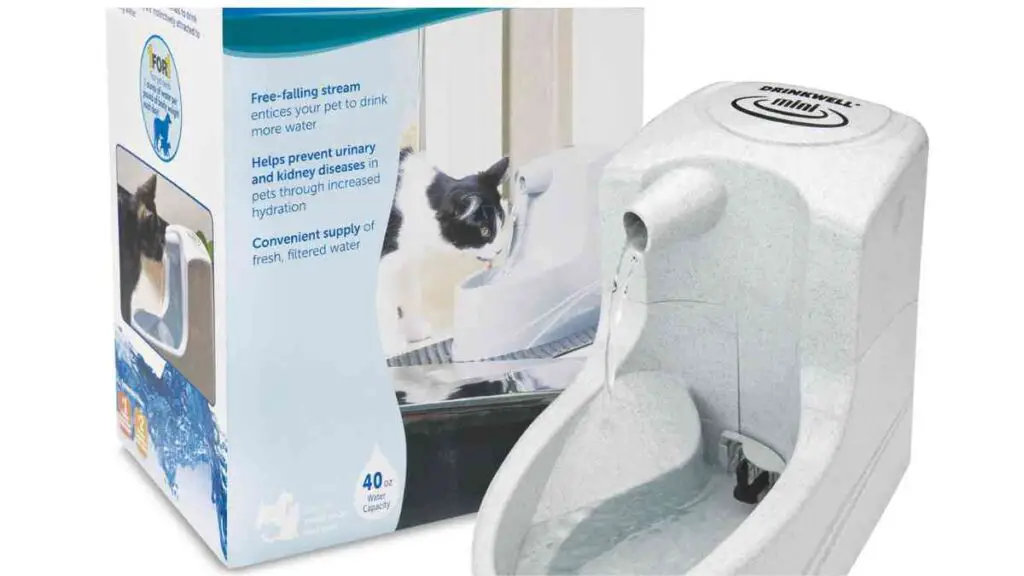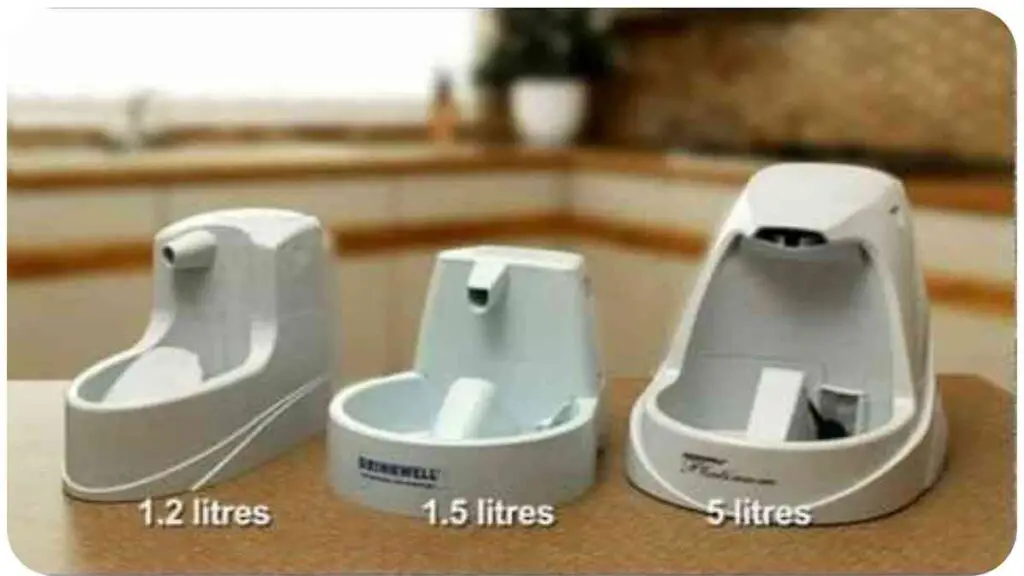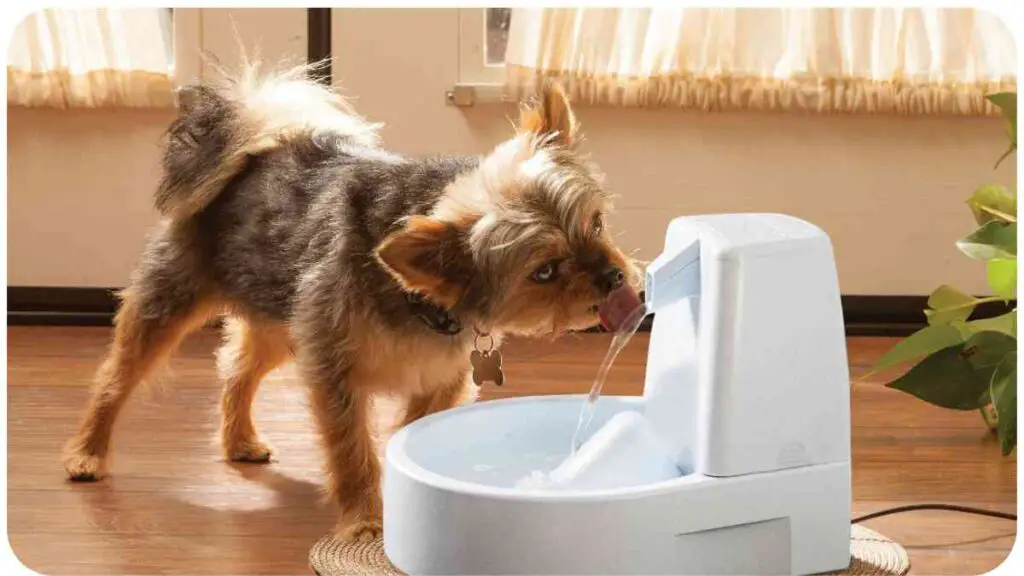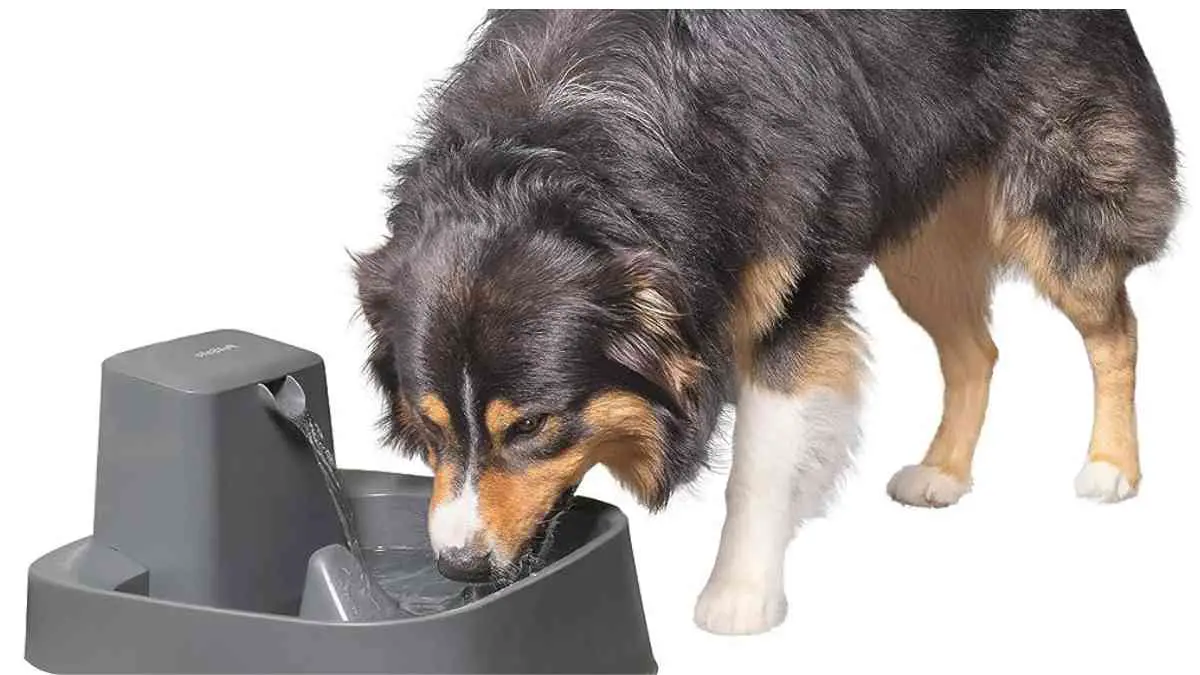We all love our furry friends, and ensuring their well-being is a top priority. One common issue pet owners face is the noise coming from their Drinkwell pet fountain. As a seasoned pet enthusiast and experienced content creator, I understand the frustration that accompanies this situation.
In this comprehensive guide, I’ll draw from my expertise and personal journey to provide you with actionable solutions to silence that pesky noise once and for all.
| Key Takeaways |
|---|
| Troubleshoot noise by checking water level, pump, and impeller issues. |
| Implement regular maintenance to prevent disruptions. |
| Choose an optimal location and assemble correctly. |
| Invest in high-quality filters and lubricate moving parts. |
| Seek professional help for persistent noise problems. |
| Consider model comparisons and preventive measures. |
| Remember that minor noise is normal, but excessive noise requires attention. |
Understanding the Drinkwell Pet Fountain

Before we delve into troubleshooting, let’s grasp the mechanics of the Drinkwell pet fountain. These innovative devices offer a continuous flow of fresh water, enticing our pets to stay hydrated. However, just like any other appliance, pet fountains can experience technical hiccups that lead to unwanted noise.
If you’re seeking guidance on maintaining a clean litter environment for your feline friend, discovering how to efficiently clean and maintain the Breeze Litter Box System can be incredibly beneficial for a prolonged use.
Common Reasons for Noise
Water Level
One of the simplest yet often overlooked culprits is the water level. An inadequate water supply can cause the pump to operate loudly. Refer to Table 1 below for quick guidance on diagnosing and addressing water level issues.
Table 1: Water Level Troubleshooting
| Issue | Diagnosis | Solution |
| Low Water Level | Pump sounds strained or noisy. Water splashes loudly. | Add water to reach the recommended level. |
| High Water Level | Gurgling noise. Water flows over the reservoir edge. | Remove excess water to maintain optimal level. |
Stay tuned as we move forward to discover more potential culprits behind the noise. Remember, I’m here to guide you through each step, drawing from my own experiences.
Pump Issues
Now, let’s address the heart of the matter: the pump. A malfunctioning pump can cause various disturbances in the water flow, resulting in unpleasant noise. Table 2 offers insights into diagnosing and remedying pump-related issues.
Table 2: Pump Troubleshooting
| Issue | Diagnosis | Solution |
| Pump Vibrations | Intense vibrations and buzzing noise. | Ensure the pump is properly seated and level. |
| Clogged Pump | Irregular water flow and rattling sound. | Clean the pump thoroughly and remove debris. |
| Pump Wear and Tear | Grinding or clicking noise. | Consider replacing the pump if it’s worn out. |
Impeller Problems
The impeller, a small rotating part responsible for water circulation, can also contribute to the noise. Don’t worry; I’ve been there too. Check out Table 3 for guidance on impeller-related troubleshooting.
Cat owners often invest in electric beds for their pets’ comfort. But when issues arise, it’s essential to know the possible causes. Learn why your cat’s electric bed isn’t heating and the troubleshooting methods that can help.
Table 3: Impeller Troubleshooting
| Issue | Diagnosis | Solution |
| Impeller Misalignment | Clicking noise or rattling. | Realign the impeller, ensuring it moves freely. |
| Impeller Debris | Grinding sound or irregular flow. | Clean the impeller and surrounding area thoroughly. |
Cleaning and Maintenance

Regular maintenance plays a significant role in ensuring your pet fountain remains noise-free. Neglecting cleaning can lead to clogs and disruptions. Refer to Table 4 for a maintenance routine that promotes a quiet operation.
Table 4: Maintenance Routine for a Quieter Fountain
| Task | Frequency |
| Clean Pump and Impeller | Every 2-4 weeks |
| Replace Filters | Every 4-8 weeks depending on use |
| Rinse Reservoir | Weekly |
| Deep Clean Fountain | Every 1-3 months |
By incorporating these practices into your routine, you’ll be well on your way to a serene environment for both you and your beloved pets.
Troubleshooting Steps
Now that we’ve tackled the specific issues causing noise, let’s dive into some practical troubleshooting steps. These actionable solutions will empower you to address the problem head-on and create a harmonious atmosphere for you and your furry companions.
A cat tree is an essential play and rest area for our feline companions. Ensure it’s set up correctly by following the Kitty Mansions Cat Tree assembly tips and tricks, guaranteeing safety and longevity.
Checking the Water Level
Begin with a simple check of the water level in the reservoir. As mentioned earlier, an insufficient water supply can strain the pump and create noise. Ensure the water level is within the recommended range, as indicated in the manufacturer’s guidelines. Remember, a well-hydrated pet is a happy pet, and a peaceful environment is beneficial for everyone.
Inspecting the Pump
When dealing with vibrations or irregularities, take a closer look at the pump. Ensure it is properly seated and level. Sometimes, a minor adjustment can make all the difference. If vibrations persist, consider cleaning the pump thoroughly to remove any accumulated debris that might be causing disruptions.
Cleaning the Impeller
A misaligned or debris-laden impeller can generate unwanted noise. Disassemble the fountain as per the manufacturer’s instructions and carefully clean the impeller and its surrounding area. Reassemble the parts and observe whether the noise persists. Your pets will thank you for the tranquil oasis you’re creating.
Regular Maintenance Routine
I can’t stress enough the importance of a consistent maintenance routine. The tables provided earlier give you a clear roadmap to follow. Regularly cleaning the pump, impeller, and other parts, as well as replacing filters and giving the reservoir a rinse, can significantly reduce the likelihood of noise issues. A well-maintained pet fountain is not only quiet but also a healthier choice for your pets.
GPS collars are invaluable for keeping tabs on adventurous cats. However, technical glitches can sometimes arise. For peace of mind, explore the reasons why your cat’s GPS collar might be inaccurate and how to remedy such issues.
Expert Tips for Silent Operation
Beyond troubleshooting, there are proactive measures you can take to ensure your Drinkwell pet fountain operates silently and efficiently. Drawing from my expertise and personal journey, here are some expert tips:
Choosing the Right Location
Where you place the pet fountain matters. Opt for a stable, level surface away from direct sunlight or drafty areas. This will prevent unnecessary vibrations and ensure a consistent water flow, minimizing noise.
Proper Assembly
Assembling the pet fountain correctly is crucial. Refer to the manufacturer’s instructions and take your time during setup. Ensuring all components are properly aligned and connected can prevent future issues that may lead to noise.
Using High-Quality Filters
Filters play a vital role in maintaining water quality and preventing debris from entering the pump and impeller. Invest in high-quality filters recommended by the manufacturer, and replace them at the recommended intervals. This not only promotes a quiet operation but also keeps your pet’s water clean and fresh.
Lubricating Moving Parts
Regular lubrication of moving parts, such as the impeller, can reduce friction and vibrations. Consult the manufacturer’s guidelines for suitable lubricants and frequency of application. A well-lubricated pet fountain operates smoothly and quietly.
By implementing these expert tips, you’re not only fixing noise issues but also ensuring a delightful experience for both you and your furry companions.
Personal Anecdotes: My Journey with Pet Fountains

As a pet enthusiast, I’ve had my fair share of experiences with pet fountains. I vividly remember the first time I set up a Drinkwell pet fountain for my cat. The initial excitement was quickly dampened by an unexpected noise that disrupted the peaceful atmosphere I had envisioned. Determined to find a solution, I embarked on a journey of trial and error, learning valuable lessons along the way.
Through persistence and a bit of research, I discovered the intricacies of the fountain’s mechanics. It was through personal anecdotes like these that I honed my expertise in troubleshooting and maintaining pet fountains. Today, I’m excited to share these insights with you, so you can skip the frustrations and enjoy a serene environment for both you and your pets.
Hydration is crucial for cats, and the Catit Flower Fountain is a popular choice. To ensure the water remains fresh and clean, it’s vital to know if the Catit Flower Fountain needs filter replacements. Familiarize yourself with this comprehensive guide to optimize your cat’s hydration.
DIY vs. Professional Help
When it comes to resolving noise issues with your Drinkwell pet fountain, you might wonder whether to take matters into your own hands or seek professional assistance. Let’s weigh the options:
When to DIY
For minor issues like water level adjustments, basic pump cleaning, and impeller realignment, a DIY approach can be effective. Armed with the troubleshooting steps and expert tips I’ve shared, you’ll likely be able to silence the noise without much hassle.
Seeking Professional Assistance
However, if the noise persists despite your efforts or if you’re unsure about disassembling and reassembling intricate parts, it might be wise to consult a professional. A pet fountain repair expert can diagnose underlying issues and provide targeted solutions. While it might involve an investment, it’s a step toward a noise-free and hassle-free experience.
Comparing Drinkwell Models
Before we wrap up, let’s briefly compare a few popular Drinkwell pet fountain models to help you make an informed choice:
Drinkwell 360
This model offers multiple water streams, making it perfect for multi-pet households. It’s easy to assemble and disassemble for cleaning, reducing the likelihood of noise-related issues.
Drinkwell Pagoda
Known for its elegant design, the Pagoda model also features dual streams. Its ceramic construction minimizes vibrations, contributing to a quieter operation.
Drinkwell Platinum
The Platinum model offers a large water capacity and a free-falling stream. While it’s durable and low-maintenance, occasional pump cleaning is essential to prevent noise.
Preventive Measures for Longevity
To ensure your pet fountain remains a soothing oasis, implement these preventive measures:
- Stick to a regular cleaning schedule as outlined in the maintenance table.
- Keep spare parts on hand for quick replacements.
- Maintain water quality by using filtered or purified water.
Addressing Common Misconceptions
It’s important to address a couple of common misconceptions:
Noise-Free Pet Fountains
While pet fountains are designed to be quiet, some noise is inevitable due to the mechanical components. However, with proper maintenance and troubleshooting, you can minimize noise to a barely noticeable level.
One-Time Fixes
Fixing a noise issue might require ongoing care. Regular cleaning and maintenance are essential to keep your pet fountain operating silently. Think of it as a small investment for long-term tranquility.
The Reward of a Happy Pet
As you take these steps to silence the noise from your Drinkwell pet fountain, keep in mind the ultimate reward: a content and well-hydrated pet. The joy of seeing your furry friend enjoy clean, fresh water in a peaceful environment is immeasurable. By combining your love for your pet with the expertise shared in this guide, you’re creating a haven of comfort and care.
Conclusion
In conclusion, tackling a noisy Drinkwell pet fountain requires a blend of expertise, practical experience, and a willingness to troubleshoot. By following the troubleshooting steps, implementing expert tips, and understanding the nuances of each model, you’re on your way to a serene environment for you and your pets.
Remember, your efforts are not only a fix for noise but a demonstration of your commitment to your pet’s well-being. So go ahead, take action, and let the soothing sounds of a silent pet fountain enrich your home.
Thank you for joining me on this journey to a quieter and happier pet fountain experience.
Further Reading
For more in-depth information and resources on troubleshooting and maintaining your Drinkwell pet fountain, consider exploring the following links:
Drinkwell Platinum Pet Fountain Support
Visit this link for comprehensive support and guidance on maintaining your Drinkwell Platinum pet fountain. Find step-by-step instructions, videos, and tips to ensure a noise-free and efficient fountain.
Drinkwell UK – Care and Maintenance
Dive into a detailed guide on caring for your Drinkwell pet fountain. Discover maintenance techniques and troubleshooting advice to address noise issues and maintain optimal fountain performance.
Amazon Reviews – Drinkwell Pagoda Ceramic Fountain
Explore customer reviews of the Drinkwell Pagoda Ceramic Fountain on Amazon. Gain insights from real users who have encountered and overcome noise-related challenges with their pet fountains.
FAQs
Here are answers to some commonly asked questions about fixing noise issues in Drinkwell pet fountains:
How can I tell if my pet fountain’s noise is due to a water level problem?
If you hear splashing or a strained pump sound, it might be due to low water levels. Check the recommended water level and adjust accordingly to reduce noise.
Is it normal for my pet fountain to make some noise?
Pet fountains do have mechanical components that can create a minor hum. However, excessive noise indicates an issue that requires attention.
Can I use tap water in my pet fountain?
Using filtered or purified water is recommended to prevent mineral buildup and debris accumulation, which can contribute to noise and other problems.
Can I lubricate the pump and impeller to reduce noise?
Yes, lubricating the moving parts with a suitable lubricant can help reduce friction and vibrations, leading to quieter operation.
How often should I replace the filters in my pet fountain?
Filters should be replaced every 4-8 weeks, depending on usage. Clean filters ensure proper water flow and help minimize noise.
Remember, each pet fountain is unique, and these answers should serve as a guide to help you troubleshoot noise issues effectively. If you have more specific questions or concerns, feel free to reach out to the manufacturer’s support or consult a pet fountain expert.

I’m Dr. Hellen James, a veterinarian who has spent her career working with cats and has seen firsthand how important it is to understand each breed’s unique needs.


